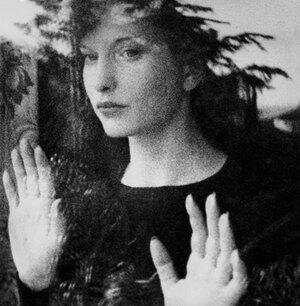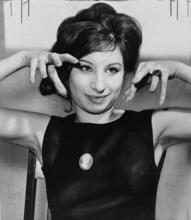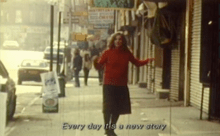Maya Deren
Maya Deren was one of the most important avant-garde filmmakers of her time for her use of experimental editing techniques and her fascination with ecstatic religious dances. Deren earned an MA in English literature from Smith in 1939 before joining choreographer Katherine Dunham’s tour. Deren then moved to Los Angeles, where she wrote; after marrying her second husband, motion picture photographer Sasha Hammid, in 1942, she collaborated with him on avant-garde films. Adept at marketing, Deren rented a playhouse in Greenwich Village to exhibit her movies, created her own distribution company, and established the Creative Film Foundation. In 1946 she used a Guggenheim Fellowship to photograph Haitian dance and became enthralled with voodoo ritual. In 1953, Deren wrote the Divine Horsemen: The Living Gods of Haiti.
Early Life and Family
For a woman who was to transform film, it is fitting that Maya Deren was born in Russia in 1917, during the birth of the Revolution.
Born Eleanora Derenkowsky in Kiev, Ukraine, on April 29, 1917, the only child of Marie (Fiedler) and Solomon David Derenkowsky, she was named after Eleanora Duse, the eminent Italian actor.
With pogroms continuing in Ukraine into 1922, Eleanora Derenkowsky’s family fled to America. They landed in New York, and later joined family members in Ohio, while her father studied at Syracuse University for his American degree in medicine. A psychiatrist, Dr. Derenkowsky was appointed as an assistant physician at the Syracuse State School for Mental Defectives. In 1928, the Derenkowskys became naturalized American citizens and shortened the family name to Deren.
Deren attended both elementary and high schools in Syracuse. She spent 1930 to 1933 in Geneva, Switzerland, at the League of Nations’ International School, where she pursued her desire to write. She returned to Syracuse in 1933, entering Syracuse University to study journalism and political science. There she met and married fellow student Gregory Bardacke, whose Russian Jewish family had moved to Harbin, China, Bardacke’s birthplace, before immigrating to America. In 1935, Deren and Bardacke moved to New York City, where he became a union organizer. Both she and her husband were actively involved in the American socialist movement.
Many thought Deren’s socialist leanings served as a replacement for Judaism. Her father, whom she adored, was agnostic. Clearly aware of her Jewish roots, she felt no affinity for her religion or culture. Though aware of problems for Jews in the world, Deren looked to socialism as the cure for such issues. Indeed, socialism allowed her to merge her Jewish identity into a universalist worldview. She rarely made reference to her Jewishness.
Apart from her political activities, Deren finished her B.A. degree at New York University in 1936. By 1938, she and Bardacke were divorced. At this juncture, Deren attended Smith College, completing her master’s degree in English literature in June 1939.
Dance and Writing
First working as an editorial assistant, Deren was hired in 1940 as the secretary to choreographer Katherine Dunham, whom she joined on her cross-country road tour. Deren subsequently published an article entitled “Religious Possession in Dancing” for the journal Educational Dance. She parted from Dunham in 1942.
Living in Los Angeles with her mother, Deren met photographer Alexander Hackenschmied, who had fled the Nazis from his native Czechoslovakia. Having changed his name to Sasha Hammid, he worked as a motion picture photographer for the American newsreel The March of Time. She married Hammid in 1942.
Deren had continued to pursue her ambitions as a writer. She published poetry, essays, and newspaper articles. But with Sasha Hammid, she penetrated the world of film, becoming Maya Deren, an avant-garde filmmaker.
Film Career
Together, she and Hammid made the highly experimental Meshes of the Afternoon (1943). Immersed in symbolism—Deren’s beloved father was, after all, a psychiatrist—the film tampers with past and present, time and place, and reality and fantasy in this interpretation of a frightening dream.
Deren and Hammid moved to New York, where Deren, often referred to as the Mother of Underground Film, continued her film career, focusing also on her interest in dance. Considered among the most important figures in the postwar development of personal independent films in the United States, Maya Deren defined her approach: “The great art expressions will come later, as they always have, and they will be dedicated, again to the agony and the experience rather than the incident.”
Because of the inherent difficulty in distributing her experimental films, Deren became a self-promoter par excellence: she rented the Provincetown Playhouse in Greenwich Village, where she exhibited her films. In addition, she set up a distributing business from her home and established the Creative Film Foundation to provide cash awards and money for experimental filmmakers.
Voodoo Work
Eventually, Sasha Hammid and Maya Deren divorced. Deren received a Guggenheim Fellowship in 1946 for the purpose of traveling to Haiti in order to photograph Haitian dance. She remained for eighteen months and became immersed in voodoo rhythms and rituals. She shot thousands of feet of film, but she never completed her envisioned film. Voodoo ceremony, however, remained an integral part of her life, as she continued to practice its rites in New York.
Maya Deren met her third husband, Teiji Ito, when he was only fifteen years old and she was in her thirties. Deren lived with the Japanese youth for many years, and eventually, they married. He became a composer, at one point adding music to her earlier film At Land (1944). Maya Deren died of a cerebral hemorrhage on October 13, 1961, at age forty-four.
A documentary by Martina Kudláček, “In the Mirror of Maya Deren” was released in 2002.
Selected Works by Maya Deren
An Anagram of Ideas on Art, Form and Film (1946).
“Cinematography: The Creative Use of Reality.” In The Avant-Garde Film: A Reader of Theory and Criticism, edited by P. Adams Sitney (1978).
Filmography
At Land (1944).
Meditation on Violence (1948).
Meshes of the Afternoon (1943).
Ritual in Transfigured Time (1946).
A Study in Choreography for the Camera (1945).
The Very Eye of Night (1959).
The Witches Cradle (1943).
Brakhage, Stan. “Maya Deren.” In Film at Wit’s End: Eight Avant-Garde Filmmakers (1989): 91–112.
Clark, VeVe, Millicent Hudson, and Catrina Neiman. The Legend of Maya Deren (1984).
Deren, Maya. Papers. Department of Special Collections, Mugar Memorial Library, Boston University.
NAW modern.
Obituary. NYTimes, October 14, 1961, 23:4.
Renan, Sheldon. An Introduction to the American Underground Film (1967).
Sadoul, Georges. Dictionary of Film Makers (1972).
Vogel, Amos. Film as a Subversive Art (1974).





